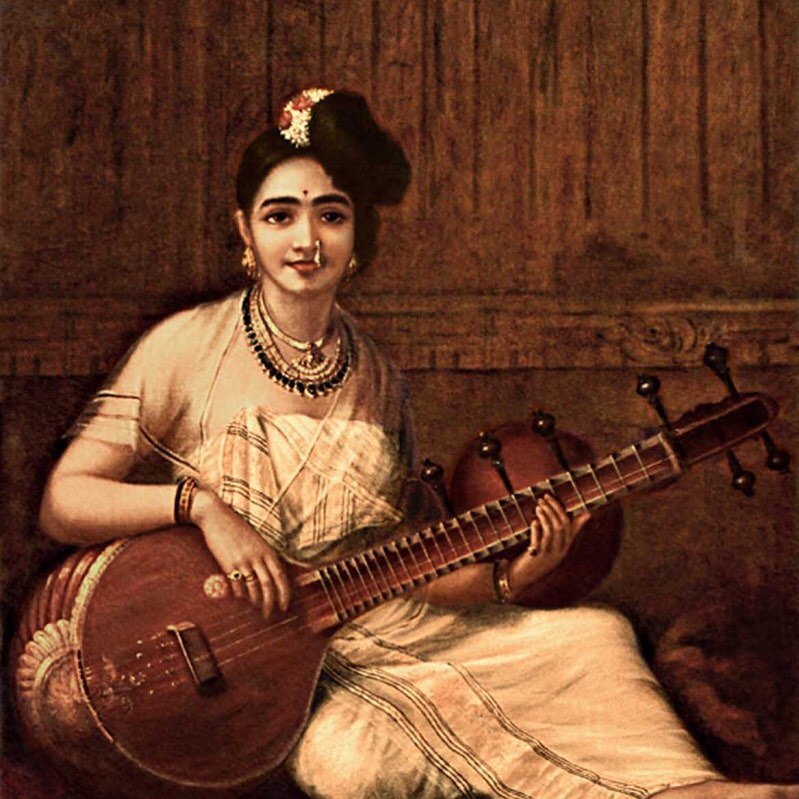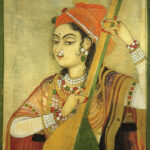Melakarta ragas are basic ragas that can generate other ragas. These are also known as Janaka ragas due to this reason – ‘janaka meaning parent in Sanskrit. Melakartas are sometimes also referred to as Sampurna at times.
Some of you readers might be Hindustani music enthusiasts, and for those of you, Melakartas are basically the equivalents of ‘thaats’. There are, however, 72 Melakartas in Carnatic music, contrary to only 10 in Hindustani sangeet.
For a little background, there are twelve swaras in all in music. Each Melakarta is made up of a combination of these twelve swaras. Each of these 72 melas is different from each other in some form or the other. These 72 ragas can further be divided into twelve groups of six ragas each, known as twelve chakras.
The chakras have a very interesting way of nomenclature, where the names of each of the 12 chakras suggest their ordinal number as well. For instance, the first chakra is known as the Indu Chakra; ‘Indu’ stands for the moon, which is only one for the Earth.
Similarly, the remaining eleven chakras are referred to as Netra (eyes, of which we have two), Agni (three kinds of fire – Dakshina, Ahavaniyam and Arhapatyam), Veda (four Vedas – Rigveda, Yajurveda, Samaveda and Atharvaveda), Bana (five Arrows of Manmatha/cupid), Ritu (six seasons of Hindu calendar – Vasanta, Greeshma, Varsha, Sharat, Hemanta and Shishira), Rishi (seven sages), Vasu (eight vasus of Hinduism), Brahma (nine realms of the universe), Disi (ten directions – East, West, North, South, North East, North West, South East, South West, Above and Below), Rudra (eleven forms of Shiva), and Aditya (twelve suns in the cosmic universe).
Raamamaatya first proposed the Melakarta scheme of ragas in his work Svaramelakalanidhi c. 1550. He is regarded as the father of the mela scheme. Later in the 17th century, in his Chaturdandi Prakasika, Venkatamakhi expounded a new mela system. However, today the 72 Melakarta ragas use a standardized pattern, unlike Venkatamakhi pattern, and have gained a significant following. Govindhacharya is credited with the standardization of rules and known for giving different names for standard ragas that have a different structure but the same swaras as those proposed by Venkatamakhi.
The 72 Melakarta Ragas are given to music enthusiasts in both Venkatamakhi and Govindhacharya Systems. For all 72 Ragas, both Shadja (sa) and Panchama (pa) are prevalent; while Risabha (re), Gandhara (ga), Madhyama (ma) Swaras stay the same for the 6 Ragas in each Chakra, either Dhaivata (dha) or Nisada (ni) or both differ for each Raga.
Each Melakarta raga has a different scale. This scheme envisages the lower Sa, upper Sa and Pa as fixed swaras, with the Ma having two variants and the remaining swaras Re, Ga, Dha and Ni as having three variants each. This leads to 72 seven-note combinations (scales) referred to as the Melakarta ragas.
There are certain characteristics alluded to Melakartas, and certain rules which must be followed.
- They must be sampurna ragas – they must contain all seven swaras (notes) of the octave in both ascending and descending scale.
- They should be krama sampurna ragas – that is the sequence is strictly ascending and descending in the scales, without any jumps or zig-zag notes.
- The ascending and descending scales must have the same notes.
- The upper Shadja is included in the raga scale (ragas like Punnagavarali and Chenchurutti are not Melakarta as they end with Nisada).
The last requisite, however, does not hold true for the Venkatamakhi system of Melakartas, which also accepts ragas ending with Ni as Melakartas. Many of the scales were asampurna (not sampurna ragas) because Dikshitar chose to follow the earlier established structure to mitigate the ill-effects of usage of direct Vivaadi swaras in the scales. We have been excelling in exploring different elements for decades and are constantly redefining each passing stage of time and years, but it is being found out that well-defined principles and values are at the heart of it – principles that provide unity and energy synergy. Whether it’s in the form of millions of musical notes that cast a magic spell, or our body and mind’s control that leads us to higher heights, the ragas are harbingers of utter bliss. They do not have any geographical obstacles and transcend all countries and cultures. This is what makes the Melakartas an important part of the theory of Carnatic music.


 तानपुरा का उद्गम एवं विकास
तानपुरा का उद्गम एवं विकास